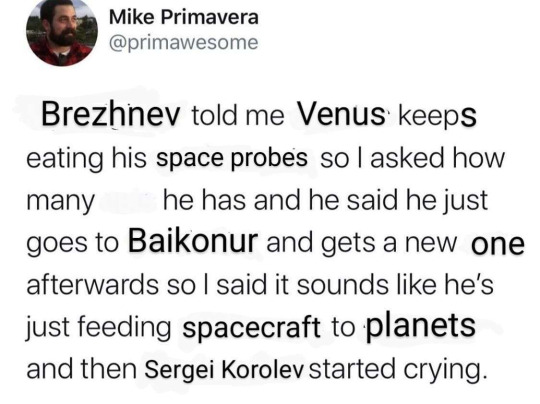#Soviet Space Program
Explore tagged Tumblr posts
Text
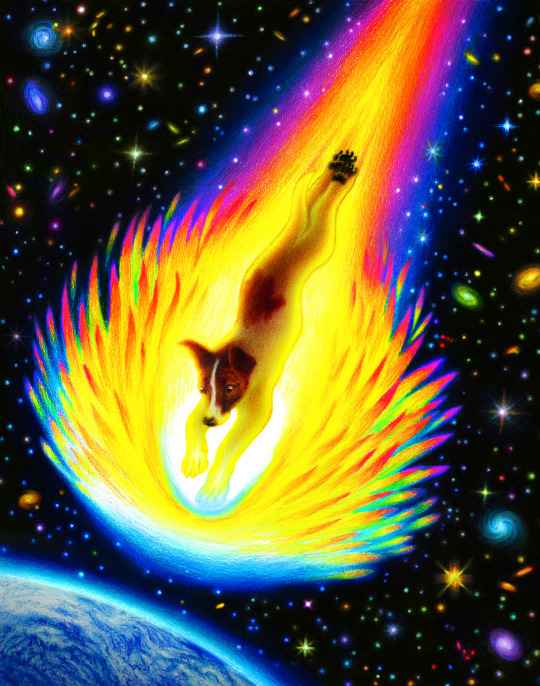
Bon Voyage
#''We kissed her nose and wished her bon voyage‚ knowing that she would not survive the flight.''#laika#laika the space dog#soviet space program#the background is heavily inspired by hubble photographs#particularly the older ones#art#illustration#colored pencil#april 14 1958 laika disintegrated upon re-entering the earths atmosphere
24K notes
·
View notes
Text

did laika dream of stars?
#art#artists on tumblr#digital art#original art#illustration#surreal#laika#laika dog#laika the space dog#dog#space#soviet space program#history
166 notes
·
View notes
Text
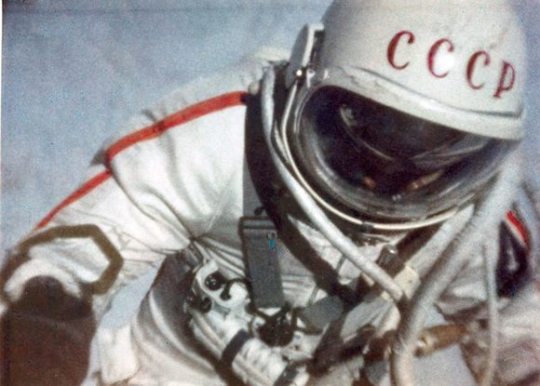
Today is the 59th anniversary of Aleksei Leonov's historic first-ever space walk. He performed it on March 18, 1965.
#i bow to people not scared to touch the unknown#space#cosmonauts#soviet#russia#ussr#1960s#soviet space program
715 notes
·
View notes
Text

The Soviet Cosmos 482 Probe, designed as a Venus lander, returned to Earth after 53 years in orbit.
76 notes
·
View notes
Text

#is this anything?#considered posting the one i made with my url's namesake but not enough people outside Russia know who he is#op#memes#not what i'm called#soviet space program#cosmonauts#yuri gagarin#yuri#gagarin#юрий гагарин#гагарин#history#soviet union#USSR
73 notes
·
View notes
Text
A car-sized piece of Soviet rocket has crashed back through the atmosphere, after 53 years in orbit. It is not immediately known where the spacecraft entered the atmosphere or how much of it survived the blazing hot descent, with scientists suggesting it had burned up or broke up at the last minute. Cosmos 482 had been set to land on Venus after being launched from the USSR's spaceport in what is now Kazakhstan in 1972. Instead, the upper stage of the rocket, which was responsible for powering it out of orbit, failed. "The upper stage didn't work right and it left just the probe in orbit around the Earth," said Smithsonian astronomer Jonathan McDowell.
Continue Reading.
81 notes
·
View notes
Text

Belka + Strelka.
#vintage illustration#illustration#soviet space dogs#space dogs#soviet union#ussr#the space race#the 60s#the 1960s#korabl-sputnik 2#soviet space program#space exploration#space travel#belka & strelka#belka#strelka#sputnik 5#sputnik v#korabl-sputnik ii
91 notes
·
View notes
Text
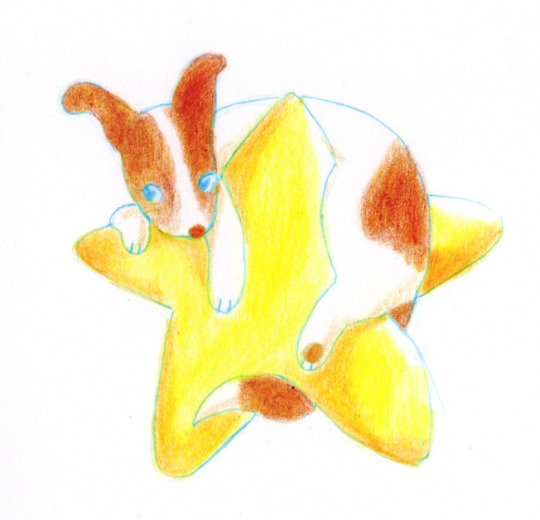
little star
348 notes
·
View notes
Text


BY THE LIGHT & POWER OF THE STARS -- PROPELLING THE SOVIET DREAM TO NEW FRONTIERS.
PIC(S) INFO: Mega spotlight on Soviet Space Program-themed pin-up titled "Starlight," artwork by Russian pin-up artist and/or illustrator, Sveta Shubina, c. 2020.
Resolution at 1116×1445 & 1080x1347.
Sources: www.reddit.com/r/Spacegirls/comments/16gir14 & X.
#Sveta Shubina Art#Sveta Shubina Artist#Pin-up girls#Soviet Space Program#Sputnik#Sveta Shubina#Sputnik 1957#Pin-up Art#Pin-ups#Soviets#Soviet Union#Illustration#Pin-up Ladies#Soviet Art#Space#Space Art#Good Girl Art#Cold War#Fifties#U.S.S.R.#1957#Communism#Communist Art#USSR#Soviet Space Art#1950s#Vintage Style#50s#Female figure#Female form
144 notes
·
View notes
Text
Cancelled Missions: Apollo-Soyuz Test Program II, with a Salyut Space Station

"The Apollo-Soyuz Test Project (ASTP) had its origins in talks aimed at developing a common U.S./Soviet docking system for space rescue. The concept of a common docking system was first put forward in 1970; it was assumed at that time, however, that the docking system would be developed for future spacecraft, such as the U.S. Space Station/Space Shuttle, not the U.S. Apollo Command and Service Module (CSM) and Soviet Soyuz spacecraft in operation at the time.

A joint U.S./Soviet space mission served the political aims of both countries, however, so the concept of a near-term docking mission rapidly gained momentum. In May 1972, at the superpower summit meeting held in Moscow, President Richard Nixon and Premier Alexei Kosygin signed an agreement calling for an Apollo-Soyuz docking in July 1975.
NASA and its contractors studied ways of expanding upon ASTP even before it was formally approved; in April 1972, for example, McDonnell Douglas proposed a Skylab-Salyut international space laboratory . A year and a half later (September 1973), however, the aerospace trade magazine Aviation Week & Space Technology cited unnamed NASA officials when it reported that, while the Soviets had indicated interest in a 1977 second ASTP flight, the U.S. space agency was 'currently unwilling' to divert funds from Space Shuttle development.

Salyut Apollo docking diagram
Nevertheless, early in 1974 the Flight Operations Directorate (FOD) at NASA Johnson Space Center (JSC) in Houston, Texas, examined whether a second ASTP mission might be feasible in 1977. The 1977 ASTP proposal aimed to fill the expected gap in U.S. piloted space missions between the 1975 ASTP mission and the first Space Shuttle flight.
The brief in-house study focused on mission requirements for which NASA JSC had direct responsibility. FOD assumed that Apollo CSM-119 would serve as the prime 1977 ASTP spacecraft and that the U.S. would again provide the Docking Module (DM) for linking the Apollo CSM with the Soyuz spacecraft. CSM-119 had been configured as the five-seat Skylab rescue CSM; work to modify it to serve as the 1975 ASTP backup spacecraft began as FOD conducted its study, soon after the third and final Skylab crew returned to Earth in February 1974. FOD suggested that, if a backup CSM were deemed necessary for the 1977 ASTP mission, then the incomplete CSM-115 spacecraft should get the job. CSM-115, which resided in storage in California, had been tapped originally for the cancelled Apollo 19 moon landing mission.
FOD also assumed that the ASTP prime crew of Thomas Stafford, Vance Brand, and Deke Slayton would serve as the backup crew for the 1977 ASTP mission, while the 1975 ASTP backup crew of Alan Bean, Ronald Evans, and Jack Lousma would become the 1977 ASTP prime crew. FOD conceded, however, that this assumption was probably not realistic. If new crewmembers were needed, FOD noted, then training them would require 20 months. They would undergo 500 hours of intensive language instruction during their training.
FOD estimated that Rockwell International support for the 1977 ASTP flight would cost $49.6 million, while new experiments, nine new space suits, and 'government-furnished equipment' would total $40 million. Completing and modifying CSM-115 for its backup role would cost $25 million. Institutional costs — for example, operating Mission Control and the Command Module Simulator (CMS), printing training manuals and flight documentation, and keeping the cafeteria open after hours — would add up to about $15 million. This would bring the total cost to $104.7 million without the backup CSM and $129.7 million with the backup CSM.
The FOD study identified 'two additional major problems' facing the 1977 ASTP mission, both of which involved NASA JSC's Space Shuttle plans. The first was that the CMS had to be removed to make room for planned Space Shuttle simulators. Leaving it in place to support the 1977 ASTP mission would postpone Shuttle simulator availability.

A thornier problem was that 75% of NASA JSC's existing flight controllers (about 100 people) would be required for the 1977 ASTP in the six months leading up to and during the mission. In the same period, NASA planned to conduct "horizontal" Space Shuttle flight tests. These would see a Shuttle Orbiter flown atop a modified 747; later, the aircraft would release the Orbiter for an unpowered glide back to Earth. FOD estimated that NASA JSC would need to hire new flight controllers if it had to support both the 1977 ASTP and the horizontal flight tests. The new controllers would receive training to support Space Shuttle testing while veteran controllers supported the 1977 ASTP.
The ASTP Apollo CSM (CSM-111) lifted off on a Saturn IB rocket on 15 July 1975 with astronauts Thomas Stafford, Vance Brand, and Donald Slayton on board. The ASTP Saturn IB, the last rocket of the Saturn family to fly, lifted off from Launch Complex (LC) 39 Pad B, one of two Saturn V pads at Kennedy Space Center, not the LC 34 and LC 37 pads used for Saturn IB launches in the Apollo lunar program. This was because NASA had judged that maintaining the Saturn IB pads for Skylab and ASTP would be too costly. A 'pedestal' (nicknamed the 'milkstool') raised the Skylab 2, 3, and 4 and ASTP Saturn IB rockets so that they could use the Pad 39B Saturn V umbilicals and crew access arm.

Once in orbit, the ASTP CSM turned and docked with the DM mounted on top of the Saturn IB's second stage. It then withdrew the DM from the stage and set out in pursuit of the Soyuz 19 spacecraft, which had launched about eight hours before the Apollo CSM with cosmonauts Alexei Leonov and Valeri Kubasov on board. The two craft docked on 17 July and undocked for the final time on July 19. Soyuz 19 landed on 21 July. The ASTP Apollo CSM, the last Apollo spacecraft to fly, splashed down near Hawaii on 24 July 1975 — six years to the day after Apollo 11, the first piloted Moon landing mission, returned to Earth.
The proposal for a 1977 ASTP repeat gained little traction. Though talks aimed at a U.S. Space Shuttle docking with a Soviet Salyut space station had resumed in May 1975, no plans for new U.S.-Soviet manned missions existed when the ASTP Apollo splashed down. Shuttle-Salyut negotiators made progress in 1975-1976, but the U.S. deferred signing an agreement until after the results of the November 1976 election were known.

In May 1977, the sides formally agreed that a Shuttle-Salyut mission should occur. In September 1978, however, NASA announced that talks had ended pending results of a comprehensive U.S. government review. Following the December 1979 Soviet invasion of Afghanistan, work toward joint U.S.-Soviet piloted space missions was abandoned on advice from the U.S. Department of State. It would resume a decade later as the Soviet Union underwent radical internal changes that led to its collapse in 1991 and the rebirth of the Soviet space program as the Russian space program."
-Article from "No Shortage of Dreams" blog: link
Drew Granston: link
source, source, source
#Apollo-Soyuz Test Program II#Apollo–Soyuz#Apollo Soyuz Test Project#ASTP#Apollo CSM Block II#CSM-119#Docking Module#SLA-18#Saturn IB#SA-209#Rocket#ASTP II#Space Shuttle Salyut#Salyut Space Station#Soviet Space Program#Soyuz-U#cancelled#Cancelled Missions#1977#my post
45 notes
·
View notes
Text
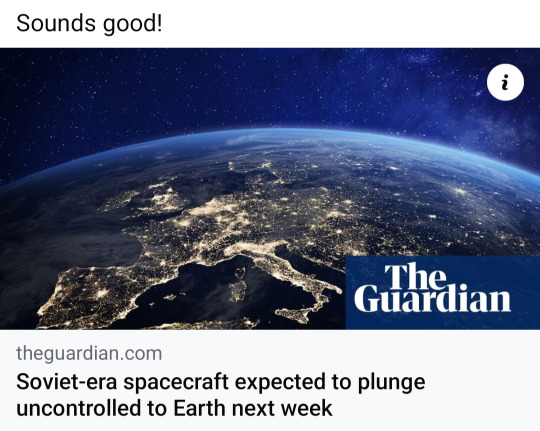
11 notes
·
View notes
Text

63 notes
·
View notes
Text

Poster by Nikolai Babin, Igor Ovasalov and Anatoly Yakushin (1977)
157 notes
·
View notes
Text

Unique space cover from 1961 (by soviet artist Vasily Zavyalov)
7 notes
·
View notes
Text
Soviet Union’s Venera 8 spacecraft is coming home. (Any day now.)
Cue up the Peter Schilling
youtube
5 notes
·
View notes
